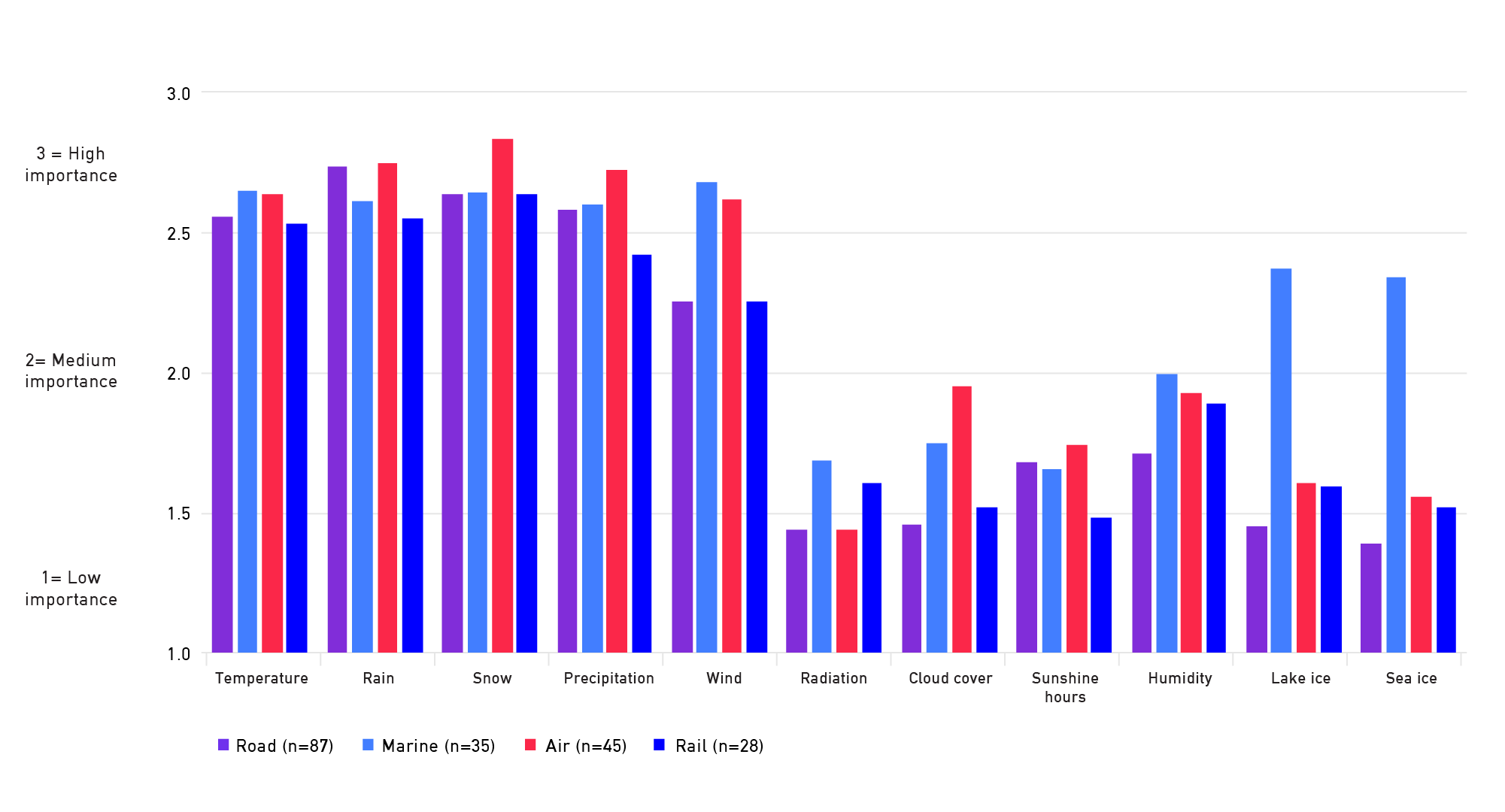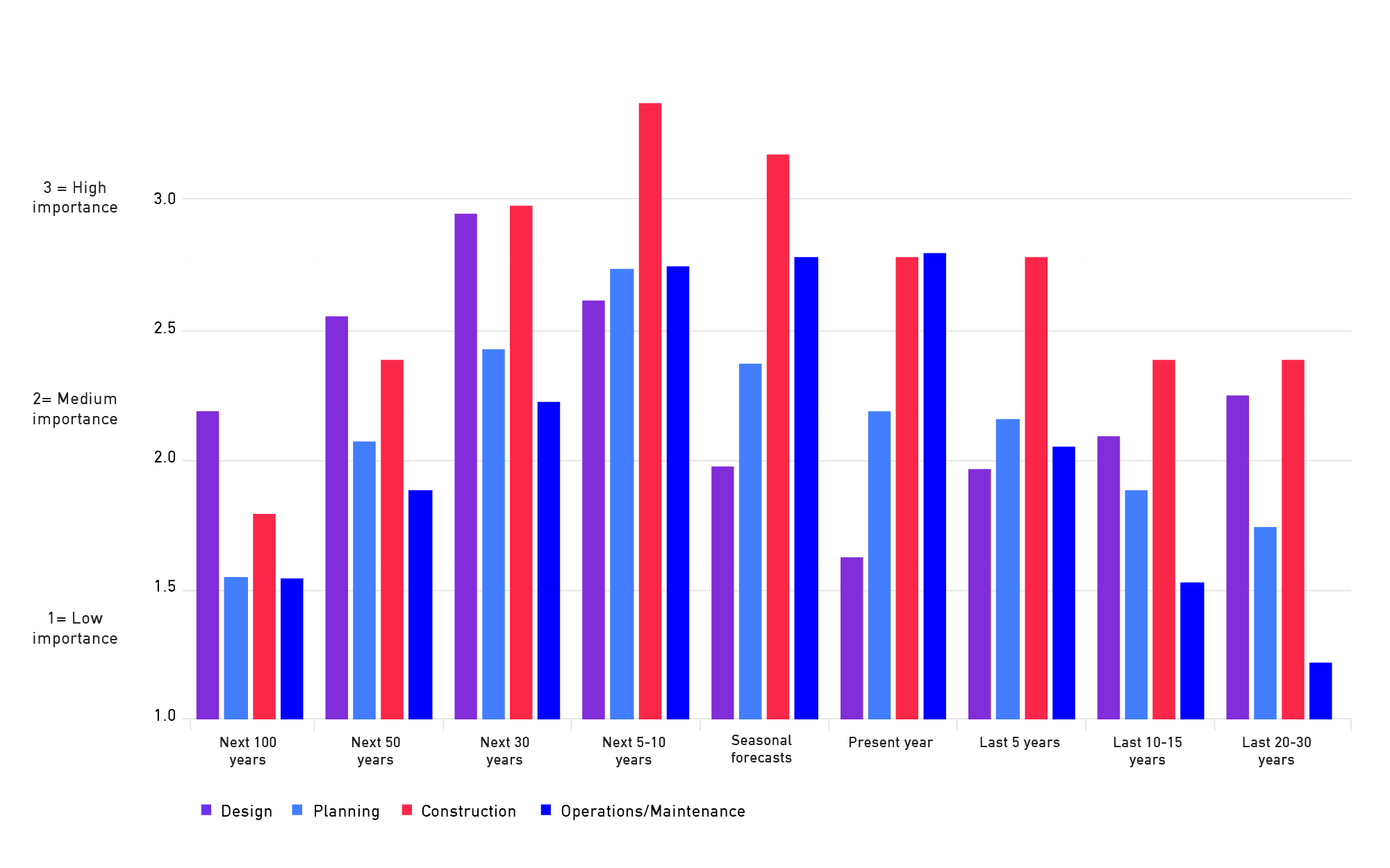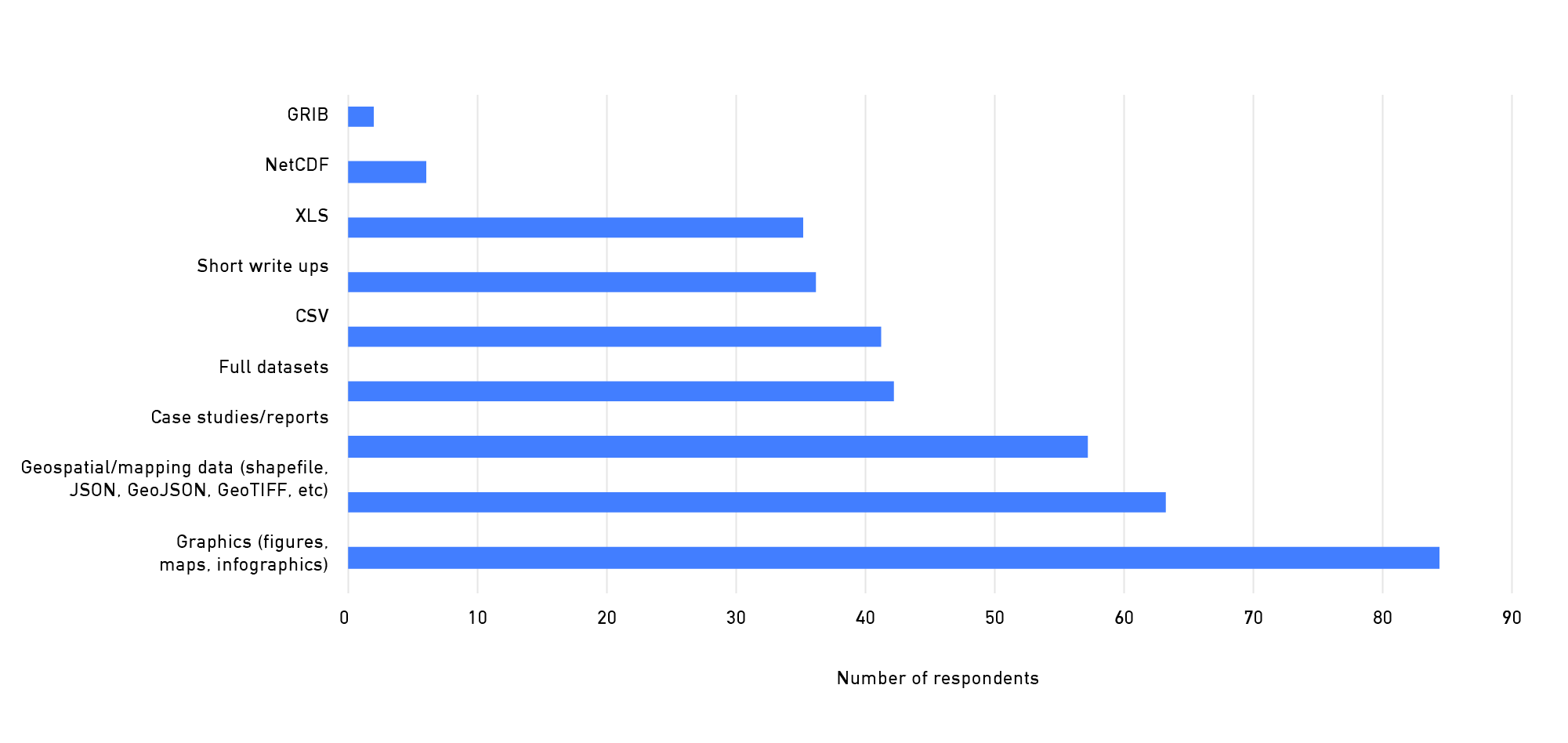During the development of the transportation module for ClimateData.ca, climate data users in the transportation sector were consulted. This included the preparation of a bilingual survey to identify the most important transportation impacts, the most relevant climate indices, and preferences for how climate information should be presented to be of most use to stakeholders in this sector.
Both French and English versions of the survey were provided to sector experts across Canada, with responses collected between December 10th, 2020 and January 4th, 2021. The ClimateData.ca team received 172 answers from across Canada: 35 from French speakers and 137 from English speakers. Overall, about 11-12% of the answers came from each of the provinces of Ontario, Québec, and British Columbia, while 5-8% of the answers came from each of the other provinces or territories.
Responses from the transportation module survey indicate that the survey reached a receptive user community with an appetite for the climate data that is available on ClimateData.ca. Respondents from across Canada occupied a wide range of professional roles in the transportation sector. Many survey respondents (65%) were involved in road transportation, which was the chosen priority area for the initial round of case studies, and therefore a good fit with the audience. There are indicators that the survey reached experienced and appropriate transportation sector professionals who were able to provide insightful feedback.




